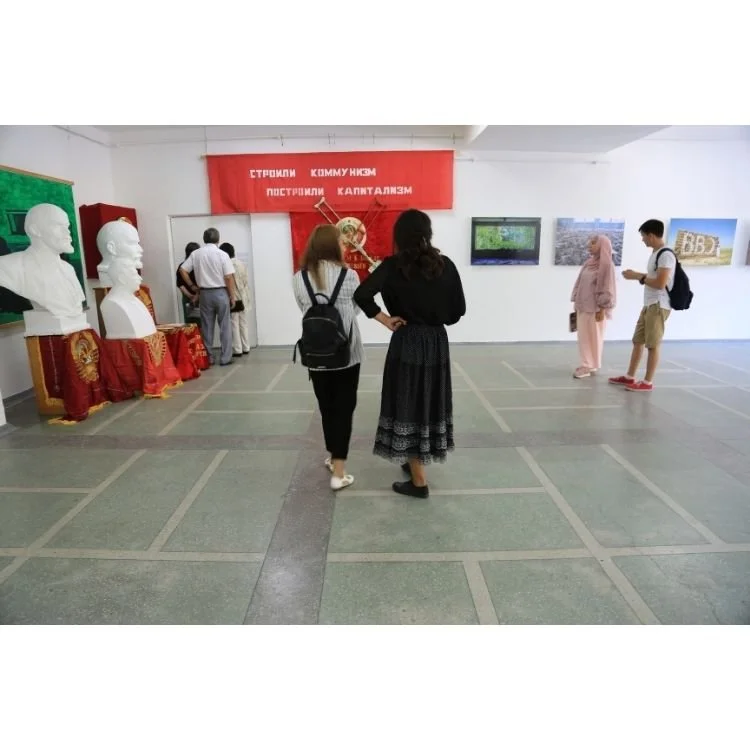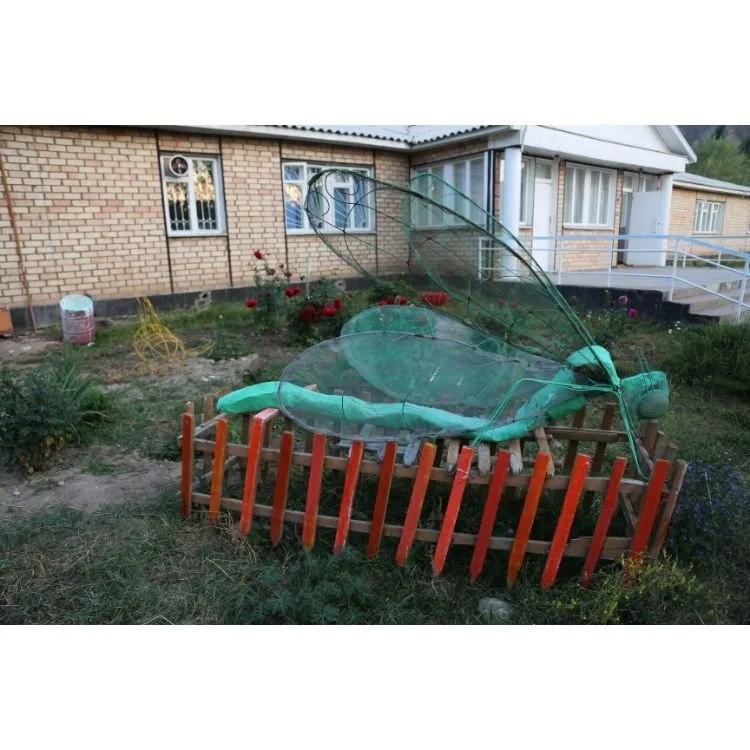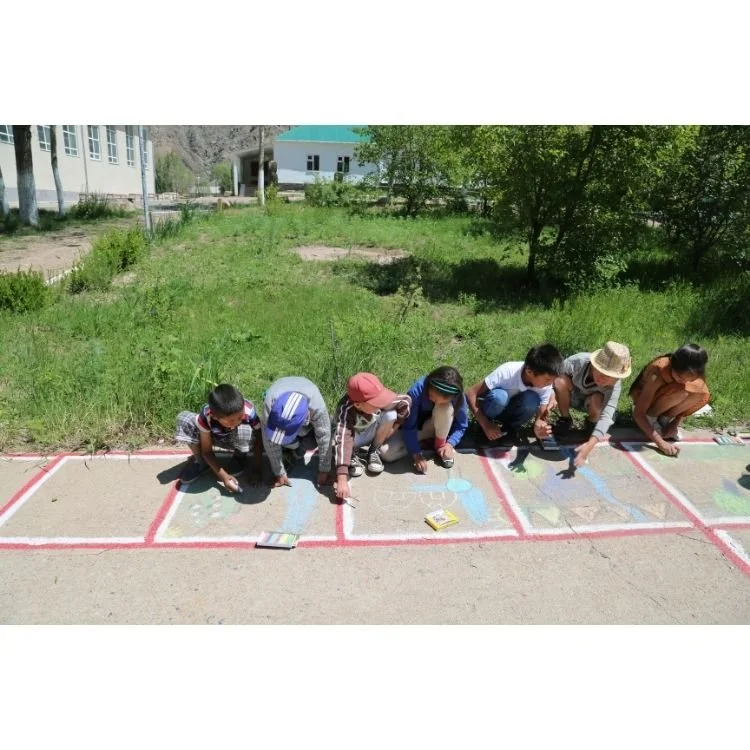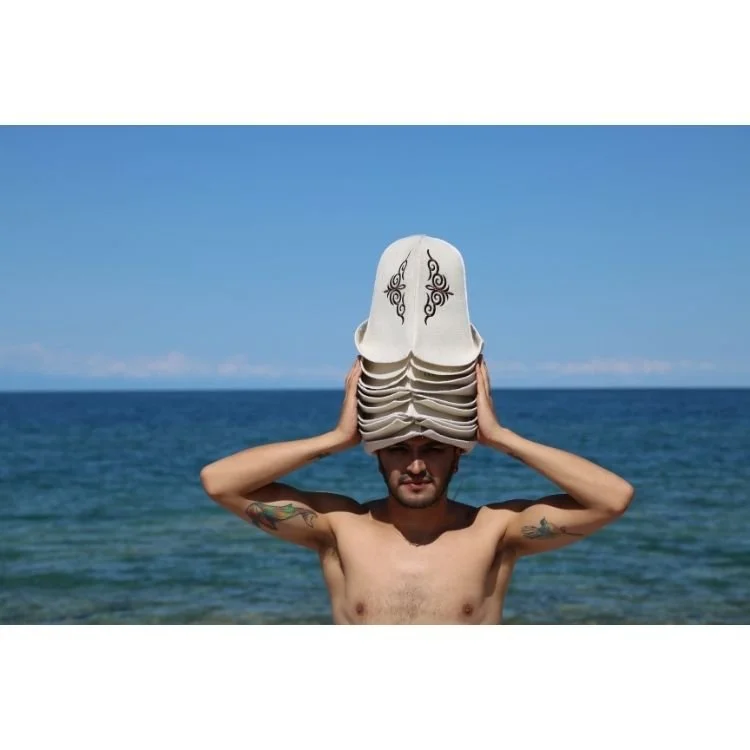Nomadic Art Camp 2017:
Stocktaking for Broader Promotion of Sustainable Management of Mountain Resources and Landscapes
The Nomadic Art project, a seven-year initiative held along the shores of three iconic mountain lakes in Kyrgyzstan—Issyk-Kul, Sary-Chelek, and Son-Kul—beautifully merges contemporary art with an ecological agenda. It creates a dynamic platform for artists and creative thinkers to engage with critical issues of biodiversity conservation, cultural heritage, identity, and the complex relationship between humans and nature. With an innovative approach, the Nomadic Art Camp exists at the intersection of art, ecology, and social responsibility, driving a deep exploration of eco-consciousness. Immersed in awe-inspiring landscapes, participating artists not only reflect on the environmental challenges facing these regions but also actively become part of the local ecosystems, engaging with nature through their artistic practices.
The selection of alpine lakes as the project’s location emphasizes its conceptual foundation. These lakes, as distinct natural landmarks, serve not only as profound sources of inspiration but also as powerful symbols of the fragility of natural ecosystems. Each lake holds a unique environmental value, offering a natural canvas for contemporary artistic expression that highlights the pressing need for sustainable management of these precious landscapes.
Issyk-Kul, one of the largest and saltiest lakes in the world, is surrounded by the majestic Tian Shan mountains. Known for its rich biodiversity, Issyk-Kul faces numerous challenges, including pollution and the impacts of climate change. Over the years, it has become a central hub for artistic expression, prompting reflection on the lake’s beauty and ecological vulnerability.
Sary-Chelek, located within a protected nature reserve, has drawn artists to its rare plant and animal species, as well as its diverse forest and aquatic ecosystems. The lake invites deeper contemplation on the importance of preserving entire ecosystems—not just isolated species—and serves as a model for how art can raise awareness about holistic conservation efforts.
Son-Kul, with its vast pastures and traditional nomadic lifestyle, offers artists the opportunity to engage directly with local communities and reflect on the enduring relationship between people and nature in high-altitude regions. Son-Kul becomes an ideal setting for exploring the delicate balance between traditional ways of life and modern ecological challenges.
The Nomadic Art project goes beyond the role of nature as a mere backdrop for creativity. It invites nature itself to participate actively in the artistic process. More than an art initiative, it serves as a profound reflection on the vulnerability of nature in the face of global ecological crises. The works created by the artists delve deeply into urgent issues such as climate change, biodiversity loss, and pollution, making a bold statement about the necessity for environmental protection. Rather than simply depicting the landscape, the artists create works that function as manifestos, advocating for a sustainable relationship with the Earth and emphasizing the importance of environmental stewardship.
The exhibition, titled "Flight of the Blind Eagle," stands as a powerful metaphor for both ecological degradation and the crisis of modern society. Traditionally a symbol of strength, freedom, and lofty aspirations, the eagle here embodies nature in all its grandeur. Yet, the "blindness" of the eagle symbolizes a loss of clear vision, representing not only physical limitation but also a global ecological apathy. The metaphor speaks to society’s failure to recognize the growing environmental threats and reflects a broader indifference driven by economic growth and technological progress. The blind eagle becomes a symbol of both environmental catastrophe and the crisis of ecological consciousness, underscoring humanity’s growing disconnection from nature in an era where economic and technological priorities often overshadow our responsibility toward the natural world.
A particularly noteworthy aspect of the Nomadic Art Camp is its interdisciplinary approach. By bringing together artists, ecologists, philosophers, and scientists, the project fosters meaningful collaborations that deepen understanding of complex ecological and social issues. These interactions expand the reach and impact of the art, providing a platform for rich dialogue, knowledge exchange, and collective problem-solving. The result is a space for discussion that increases the project’s influence, both locally and globally.
The Nomadic Art project transcends the boundaries of a traditional art initiative, evolving into a cultural phenomenon that embodies a new wave of responsibility in Kyrgyz and Central Asian contemporary art. By recognizing nature as a dynamic field for creative exploration and addressing pressing ecological crises, the project carries a strong ethical mandate: to shape public awareness around sustainability and to preserve nature as an integral component of human identity. The synthesis of art and ecology, where artistic practice becomes not merely a reflection but a catalyst for transformative change, makes the Nomadic Art Camp an innovative and impactful project that deserves close attention from the global art community and international recognition. In addition to inspiring new ways of thinking, the Nomadic Art Camp proves that art can also serve as a powerful catalyst for social and ecological change. It strengthens the understanding of how culture and ecology must intertwine in addressing contemporary global challenges. Through its enduring influence, the project underscores the vital role art plays in fostering sustainable practices and ensuring the preservation of our natural heritage for future generations.















Contributing Texts for the Catalogue:
Shaarbek Amankul (KG), Lesley Gray (UK), Monica Westin (US), Marc Mercier (FR), Alina Isakova (KG), Indira Raimberdieva (KG), Emil Shukurov (KG), Jan G. Buechting (DE), Kasia Ploskonka (UK).
Curator: Shaarbek Amankul
Participants of the Nomadic Art Camp at Son-Kul and Issyk-Kul Lake:
A group of academics, educators, and students from the University of Augsburg, Germany.
Participants of the art exhibition at the Kyrgyz National Museum of Fine Arts in Bishkek:
Ahmet Rustem Ekici (TR), Ekmel Ertan (TR), Fatih Aydogdu (TR), Anna Ceen (AT), Helen Mountaniol (IL), Marc Mercier (FR), Б’Art Studio (KG), Б’Art Studio (KG), Janarbek Amankulov (KG), Erbol Dogdurbek (KG), Emil Shukurov (KG), Dogdurbek Nurgaziev (KG), Zalkar Esenkanov (KG), Jylkychy Jakypov (KG), Syrlybek Bekbotaev (KZ), Daler Mikhtodzhov (TJ), Parvin Gulov (TJ), Alexey Ryamynsev (TJ), Laurel Beckman (US), Matteo Fadda (IT), Amenen Zamani (IR), Fran Orallo (SP), Ines Wickmann (CO), Jason Moyes (SC), Samuel Bester (FR), Jason Moyes (SCT), Peter Pohl (DE).